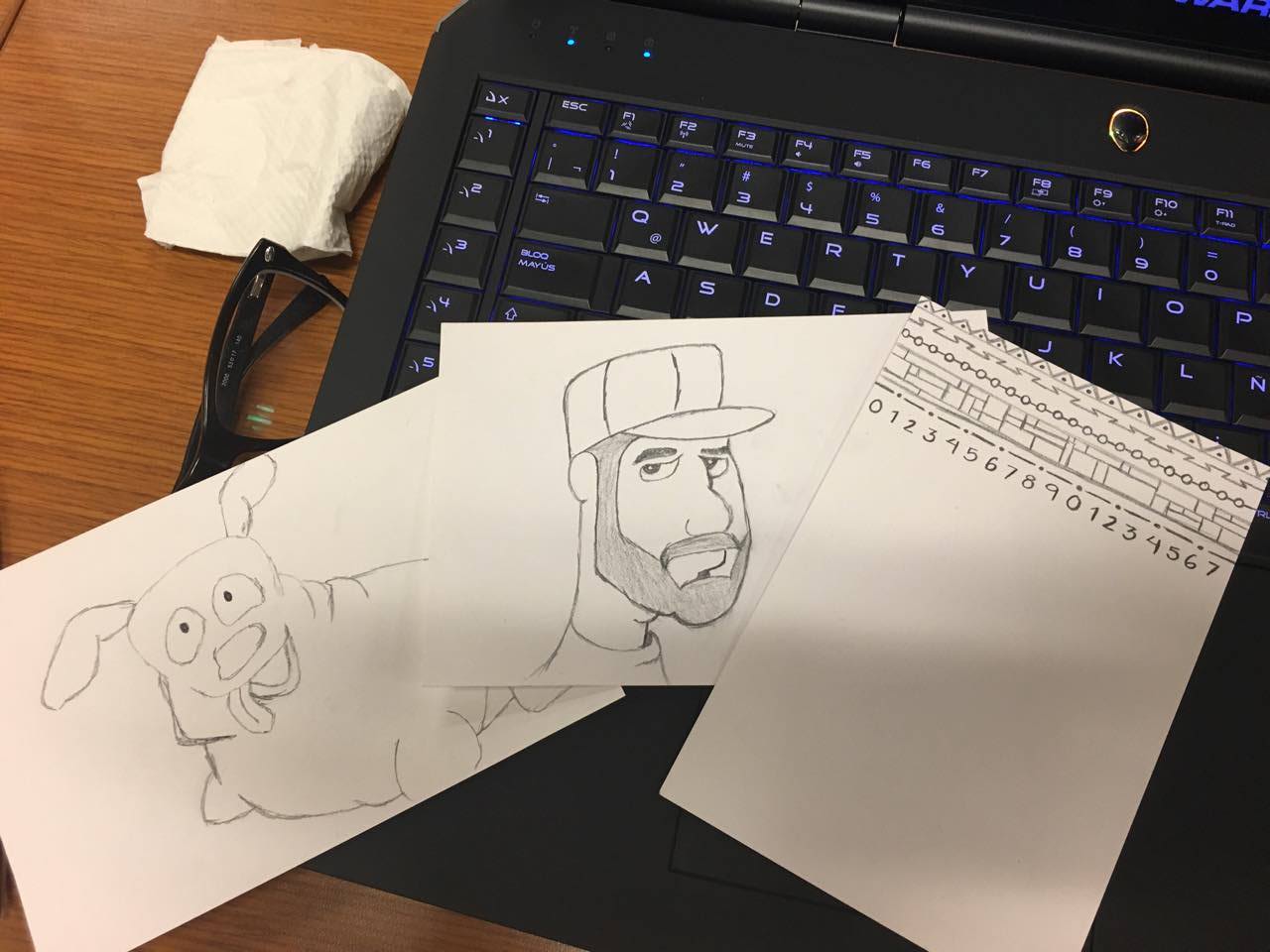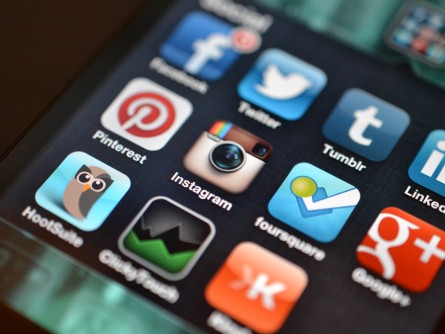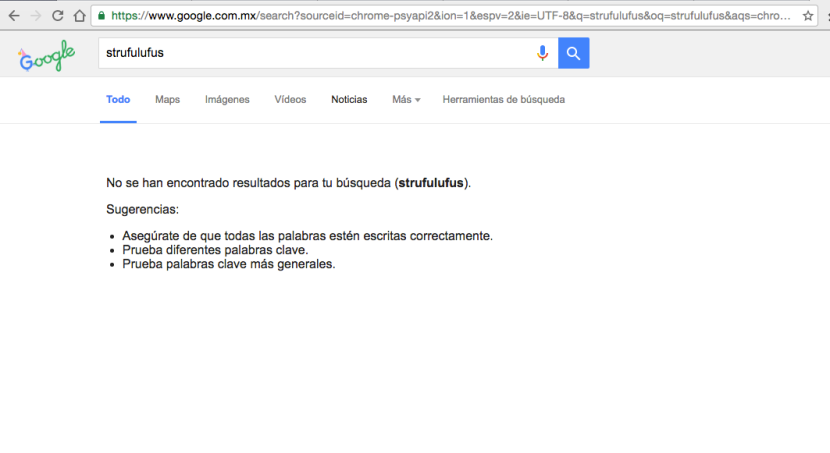--Originally published at kimberlyuribe.wordpress.com
If you’ve ever felt victimize by your social networks asking “What’s happening?” or “What’s on your mind?” is either because you’re an independent strong user who needs no interface to ask you anything about your day or because you can’t actually reduce your “complicated millennial mind” to fit a text box. Ok, or maybe you don’t care at all. Whichever the answer is, what those boxes ask us is way deeper than we think.
This boxes challenge us in different ways according to the nature of the platform. While Facebook’s phrase addresses our own thoughts, Twitter asks about facts, about things happening in that moment. Of course we skip all of this interaction and just tweet about how hungry we are (as if spending all of our money in pizza isn’t enough). According to “Social networks that matter: Twitter under the microscope“; a study that explores the relation between followers, followees and friends, networks that matter in social media are those that are made out of patterns of interaction between people rather than those made of people the user claim to be friends with (like adding someone to the friend’s list in Facebook). As a reflection of the findings, to figure out the size of a network that matters, one must consider users who actually communicate through direct messages with each other. This research found out that people using Twitter only keep in touch with a small number of the people they follow. As a conclusion, it questions the point of view of scholars, advertisers and political activists who believe that online social networks help as a propagation of ideas and formation of social bonds.
Although(thru a basic and lame skimming of the paper and a fast Adobe pdf highlighter tool) mathematically the study makes sense, some educators have a different point of view. Social networks including Twitter, make a great difference in how we perceive the place were we live (hello! mother earth, duh) and people whom we read have an important role for us to build an opinion and impress your crush with facts and knowledge.
New generations are most likely to get informed by social media (Facebook, Twitter or even Snapchat visiting the discovery section) than what they are from other “oficial” media. Information we take from social networks stays in our brains all day long (including all of those memes from 9gag). We can actually know how many people have seen our tweet complaining about traffic jam (omg, never ever go out by 8:00 a.m.). So, how could we change the world if we consider the content we post every day? One brain-full woman and cute mother called Maha Bali (Long Story Short I met her thanks to a cool Google Hangout session you can watch here. She’s a Professor at the American University in Cairo, passionate on the process of learning and teaching and is one of the co-funders of Virtually Connecting. Oh, and a blogger). In one of her posts she talks about promoting empathy and social justice online. Some of the most important things I read in her post where that:
- Some of the most important works from people who want to achieve this social justice state that raising consciousness about oppressive conditions may actually cause freedom.
- Question power structures!
- Social media empowers people to stand up for their opinions and believes
- Make people aware of what’s happening thru social media
- “Share virtual space with others, regardless of geography“
After reading her article two things popped out in my head: being and feminists and a vegetarian. These are two things I’m passionate of talking about. Nevertheless, sometimes I remind silent because most of the time people will only react with things such as this:

Ok, sometimes those jokes are funny, I have to admit. But my point is that, I don’t want to change people’s habits one talk at a time, but if people ask my reasons on why am I vegetarian, I want to raise awareness on topics such as food ethics or animal cruelty. I really don’t want to have a beef with no one (ah ja ja! see what I did there?). Just when I was about to give up on giving my opinion whenever I feel like, something happened. I’m fan #1 of making remarks and jokes about “The Patriarchy” or heteronormativity. You know, those things you can actually hear like “Doing [whatever] is boy’s stuff” that men tend to ignore or categorize as offensive. I’m so triggered and pissed when these phrases catch my ear. And my friends know it. Almost all of my friends are men, which is great because I think there’s a big learning process between me learning what is like to be a boy, and them learning what is like to be a girl. So after a month or so of hearing my constantly complains about the topic, what surprised me the most happened one lovely Friday afternoon: “Ok, so can you actually explain to us what do to mean by <<The Patriarchy>>?”
This is not a drill people! A group of men actually where interested in feminism! The Suffragettes would be so proud of me!
After explaining what all of those terms mean, and giving examples on how we see things as normal when they are not (making “You kick like a girl” offensive when it shouldn’t), my friends had bunches of questions. I was surprised. Sometimes when we hear all of these anti-feminist comments or when someone says we are Femi Nazis, we get so pissed off that we actually ignore ignorance. I got surprised to realize that maybe, just maybe, most of the times people say something against feminism is because people actually don’t know what it stands for. How did I know my little conference about “The Patriarchy” worked? (If after 3 times that you just read the term “The Patriarchy” you aren’t reading it in a gloomy and scary voice, you’re doing it wrong and start over reading this). I knew it worked because my friends now point out any anti-feminist comment. They start to realize which comments where heteronormative; from zero to hero. The moral of the story is that now I feel like I actually made a difference on how people (coff coff men) see feminism and understand them.
Going back to the social empathy, justice and social media, Social Networks that matter are not those whose interactions are made from people talking to each other, but those who speak to the world. This type of networks aren’t exclusive of the XXI Century, the rise of social awareness thru what we write has been popular since… ever. Virginia Woolf, a writer, essayist, editor and feminist is considered one of the most outstanding figures of Modern Literature and of course, Feminism of XX Century. Virginia aside from writting novels, wrote some damn good essays like “A woman must have money and a room of her own if she is to write fiction.” which is one of the most quoted texts in the Feminist movement. Nowadays, Virginia Woolf’s works is on point, thanks to a couple of blank pages filled with the voice of the oppressed. New generations have easier ways to communicate with each other. We don’t have to wait for someone to publish our books in order for people to read what we are up to. Twitter is a great tool not only to complain or retweet Tumblr quotes, is a way to talk about What’s Happening?, give your opinion in 140 characters and why not? making someone think about your tweet and create reflexive content online. Sometimes, people just need a little bit of information to change how they see things. I wish Virginia Woolf to be alive, her tweets would be LIT.













 I would also like to say that the way you behave online has a big impact on others and their opinions about you. For example, let’s say that someone posts an embarrassing photo of someone else. You have a few choices: tell the person who published it to take it down (even though it cannot be entirely erased now), report this person, or share the photo and become another cyber bully. Another example is a company that fires its employees for what they post online. This happened some time ago in a company that produces canned goods, which I won’t mention (you know, I don’t want to give bad publicity). Some employees where “doing their job” and posting some photos on Facebook. Well what they did was that they were taking their pants off and taking pictures while the food was there, before it was canned. Guess what happened later? A lot of customers saw these photos on social media and they decided to stop purchasing these goods because of what the employees were doing… Of course, they got fired on the spot.
I would also like to say that the way you behave online has a big impact on others and their opinions about you. For example, let’s say that someone posts an embarrassing photo of someone else. You have a few choices: tell the person who published it to take it down (even though it cannot be entirely erased now), report this person, or share the photo and become another cyber bully. Another example is a company that fires its employees for what they post online. This happened some time ago in a company that produces canned goods, which I won’t mention (you know, I don’t want to give bad publicity). Some employees where “doing their job” and posting some photos on Facebook. Well what they did was that they were taking their pants off and taking pictures while the food was there, before it was canned. Guess what happened later? A lot of customers saw these photos on social media and they decided to stop purchasing these goods because of what the employees were doing… Of course, they got fired on the spot. Anyway, social media can be fun, educational, and it brings people together, which creates a globalized world. Your
Anyway, social media can be fun, educational, and it brings people together, which creates a globalized world. Your 








